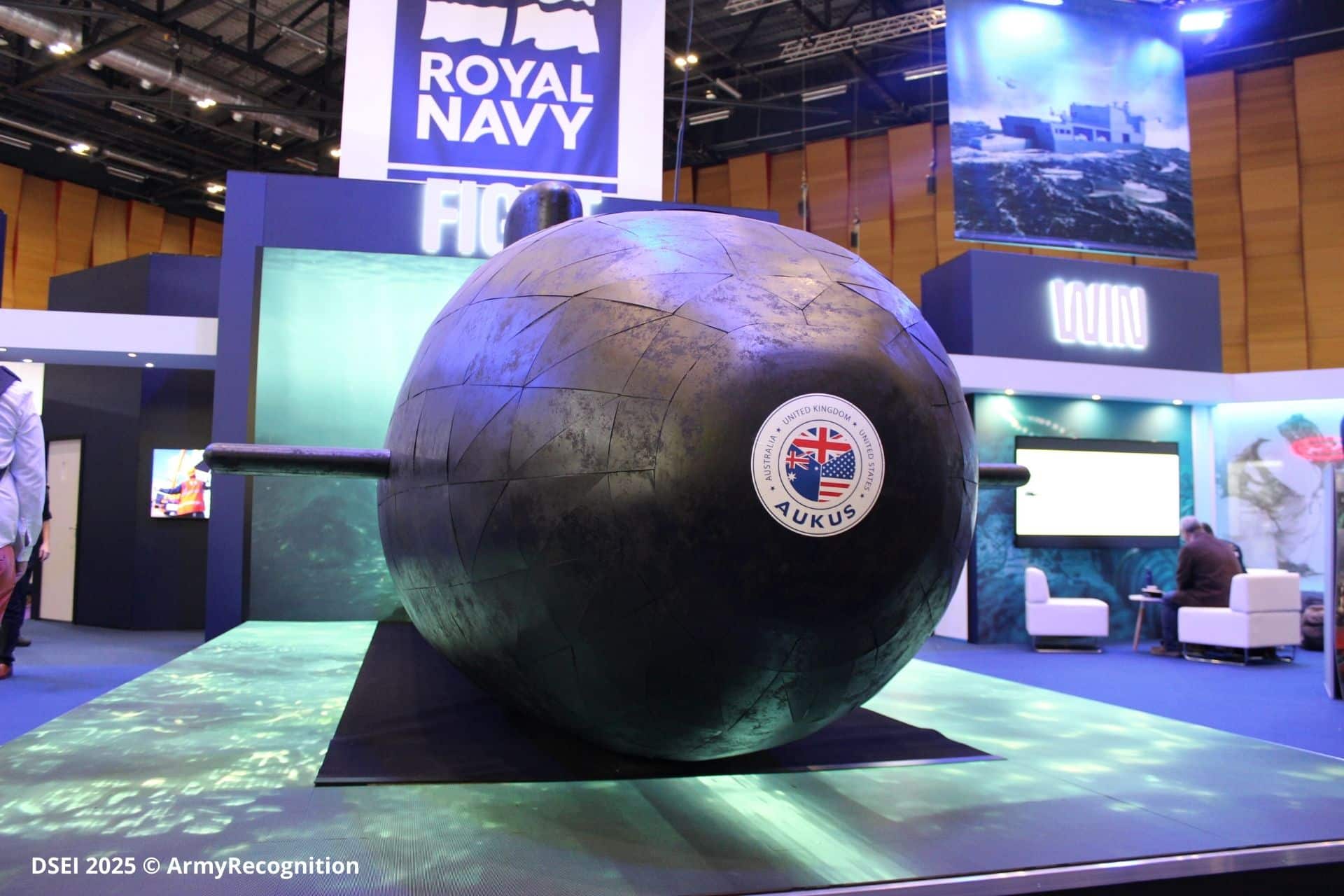Royal Navy Showcases Ambitious SSN-AUKUS Submarine Program

At the DSEI 2025 exhibition in London, the Royal Navy unveiled its SSN-AUKUS program, a pivotal initiative under the trilateral AUKUS alliance involving the United Kingdom, Australia, and the United States. This program aims to develop a new fleet of nuclear-powered attack submarines to replace the aging Astute class by the late 2030s for the Royal Navy and to establish Australia’s first nuclear-powered submarine fleet by the 2040s. The SSN-AUKUS project is designed to enhance undersea capabilities in the Indo-Pacific region and improve interoperability among the three allied navies.
Details of the SSN-AUKUS Program
The SSN-AUKUS submarines will be based on a next-generation British design, integrating advanced American technologies, particularly those from the Virginia class. These submarines will be conventionally armed but powered by nuclear energy, enabling them to conduct a range of missions, including intelligence gathering, surveillance, undersea warfare, and strike operations. The construction of these submarines will be a collaborative effort, with British shipyards at Barrow-in-Furness and Australian facilities at Osborne sharing the workload. The first British-built submarines are expected to be delivered in the late 2030s, while the initial Australian units are projected to enter service in the early 2040s.
To bridge the capability gap created by the phased retirement of the Collins class, Australia plans to acquire three Virginia-class submarines from the United States in the early 2030s, with an option for two additional units. This interim solution will ensure that the Royal Australian Navy maintains operational submarine capabilities until the SSN-AUKUS fleet is ready. The United Kingdom aims to construct up to twelve submarines, supported by significant investments in BAE Systems and Rolls-Royce facilities, allowing for a production rate of one submarine every eighteen months.
Strategic Cooperation and Challenges
The SSN-AUKUS program involves extensive industrial collaboration. In the UK, BAE Systems, Rolls-Royce, and Babcock are the primary contractors, while in Australia, BAE Systems is partnering with ASC through a joint venture. Rolls-Royce will provide the nuclear reactors for the Australian submarines, which will be manufactured and assembled in the UK. The financial stakes are high, with the UK committing £5 billion in 2023 to support the program and the broader nuclear enterprise, while Australia plans to invest approximately A$368 billion over three decades, which will also modernize local naval infrastructure.
Cooperation extends beyond construction. Since 2023, Australian officers have been integrated into the American and British navies and their industrial sectors to receive training in nuclear propulsion standards. Starting in 2027, rotations of American and British submarines to Australia will facilitate this gradual capability-building process and ensure operational continuity. This methodical approach highlights the long-term nature of the partnership, formalized in July 2025 through a fifty-year bilateral treaty between London and Canberra.
While the SSN-AUKUS program has sparked discussions about nuclear proliferation—given Australia’s status as a non-nuclear-weapon state under the Nuclear Non-Proliferation Treaty—the three nations emphasize that the technology transfer pertains solely to nuclear propulsion, not weaponry. The reactors will be sealed and designed to operate without refueling throughout the submarines’ service life. Commitments have been made with the International Atomic Energy Agency to ensure transparency and adherence to non-proliferation standards.
The SSN-AUKUS program represents one of the most ambitious naval endeavors of the early twenty-first century. Developed by BAE Systems with support from Rolls-Royce and Babcock, it signifies a long-term industrial and strategic partnership among three maritime powers. While aimed at bolstering allied presence in the Indo-Pacific, it also highlights the complexities associated with the proliferation of nuclear propulsion technology to a nation that previously operated only conventional submarines.
